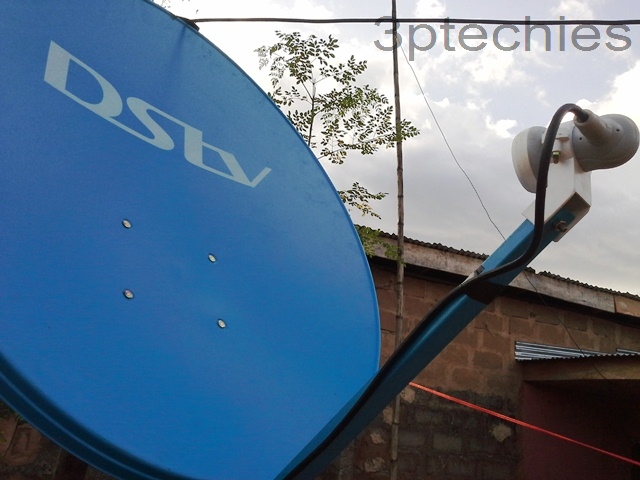
How To Install Dstv Dish And Decoder Pdf
A DStv HD Decoder sold with an installation option includes: Total travel of 25km*. A correctly aligned and installed 80cm satellite dish with a Universal LNB. Cabling from the satellite dish to one TV (up to 10 metres*) Connection of your decoder to one TV. Activation of DStv and help on how to use your decoder.
We decided to come up with a complete DIY guide for installing or setting up a satellite dish & decoder for DSTV, MyTV, Multi TV & etcetera by following after a simple tut. This idea was birthed after we recently installed one for a student who complained of having not even half our installation fees. We concluded that a guide like this can help a lot of persons install their satellite dishes without a bug of any kind. Following this guide step by step will help you install and setup your satellite Tv dishes without the usual missing channels, poor signal and related issues that happens as a result of low technical know-how for installing satellite dishes. We strongly advice you ignore this if you have a phobia for learning new stuff or not a big fan of do-it-yourself (DIY) guides. It can come in handy for new installations, adjusting dish positions and/or when relocating to a remote area.
Content Outline: • • • • • • • • • • • Tools Needed • The Satellite dish and components (ie. Reflector, Lnbf and Decoder. They are usually sold together). • A good hammer. • 4 Pieces of 3-inches nail • I packet of cable clips (the one with nails) • 10/13, and 14/15 combination, flat or ring spanner(s) • A cutter (or electric pliers) • A Black Solution Tape (cellotape). • A Screwdriver • F connectors (a minimum of 2) and Coaxial cables (1 full roll of Coaxial cable is about NGN1,000, $9) • A 4663x or 4669x Strong decoder (special digital satellite signal meters for installation can come in handy for this, but we used a strong decoder and so will be using it for references throughout this tutorial).
You can buy cheap digital satellite signal finding meters online. Either from, and/or any of the top online shopping malls with reputable sellers. Extra Tools This part is necessary if you are going to use a pipe and not the house roof, wall or wooden fetcher board before the roof. The pipe must be fixed on an open space without trees and/or other hindrances. Below is the tools necessary for mounting your satellite dish in an open space outside the building or with a longer pipe.  • A cup of Cement mixed with stones • a trowel • Cutlass or shovel (for digging of hole) • A paint of sand and a bucket of water How to Setup the Satellite Dish The satellite dish components will usually come in separate parts and must be arranged in such a way that makes it easy to receive signals and withstand strong wind. The arrangement of the dish components depends on where you intend mounting it on.
• A cup of Cement mixed with stones • a trowel • Cutlass or shovel (for digging of hole) • A paint of sand and a bucket of water How to Setup the Satellite Dish The satellite dish components will usually come in separate parts and must be arranged in such a way that makes it easy to receive signals and withstand strong wind. The arrangement of the dish components depends on where you intend mounting it on.
If you are going to mount it on a root, wall or wooden fetcher board of the building, look at the image below for how it should be coupled. After mounting your satellite dish correctly, you can safely move ahead to the next and final steps covered below. Related Tips: • • How to Configure the Decoder, Activate smart card and free-to-air channels for first viewing This is the part where your digital satellite signal meter will come into play. Plug the Coaxial cable into the Lnbf base of the main dish assembly and then plug the other end of the cable into the LNB in (Antenna) port in the back of a digital satellite signal meter or a strong decoder. Complete the second part also known as dish alignment by locating east, west, points and degrees depending on the satellite tv provider you intend doing the setup for.
Do note that for this tutorial, we used a strong decoder (as a digital satellite signal meter) to install a DSTV satellite dish and then connected the lnbf cable to the DSTV decoder to watch all the channels available for our selected plan. The angular position, polarity and transponder values for popular satellite providers is listed below for your perusal. Orbital Position & Frequencies for Popular Digital Satellite TV Providers For Multi TV: Use – • TURK SAT • Orbital Position – EAST • Transponder Frequency: 12553, 12525 or 12522 • Symbol rate: 19531, 27500 or 27000 • Polarity: Vertical For DSTV: Use – • EUTEL SAT W4 or Eutelsat W7 • Orbital Position – EAST • Transponder Frequency: 12245, 11900, or 11747 • Symbol rate: 27500 • Polarity: Horizontal Note that this particular settings works for High TV, Train TV & most other sports channels satellite providers. For Dstv we did the setup as follows: • We selected Eutelsat w4/7 • Under frequency, we put 12245 • Under symbol rate, we put 27500 • Under polarisation, we put H At this point, the signal power and quality meter will start reading, start rotating your reflector (dish) up/down and sideways around 36 degrees east (see your neighbors own for tips or read directly from your digital satellite signal meter). Watch the signal power and quality and tight the dish strongly once you are able to get values higher than 60% (We got 89% for ours).